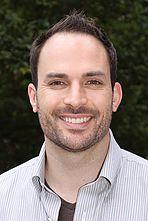Nanodevices for Probing Brain Activity

Speaker: Jacob Robinson
Affiliation: Rice University
Abstract: The activity of the nearly one hundred billion neurons inside the human brain represents our perceptions, thoughts, and actions. While scientists have long sought to crack this neural code, new technologies—including nanotechnology—are helping to revolutionize the study of the brain. In this talk I will discuss our efforts to use nanoelectronic and nanophotonic devices to manipulate and measure activity of many individual brain cells in living organisms. In particular I will show how nanowire electrodes can help us understand how neurodegenerative diseases affect signaling between neurons and muscle cells in the small round worm C. elegans. I will also discuss how nanophotonic devices can help us image deep inside brain tissue whose scattering properties typically limit optical microscopy to only the first few layers of the cortex. Together these advances in nano-neuro interfaces promise to improve our overall understanding of how the brain works in health and disease.
Biography: Jacob Robinson is an Assistant Professor in the department of Electrical & Computer Engineering and the department of Bioengineering at Rice University. He is also an Adjunct Assistant Professor in Neuroscience at Baylor College of Medicine. His research group uses nanofabrication technology to create devices that can manipulate and monitor neural circuit activity. Dr. Robinson is a proud graduate of UCLA where he earned a B.S. in Physics. He then went on to earn his Ph.D. in Applied Physics from Cornell University working with Michal Lipson. Upon completing his Ph.D. in 2008, Dr. Robinson joined Professor Hongkun Park’s research group in the Chemistry and Chemical Biology Department at Harvard University. As a postdoctoral researcher develop arrays of vertical silicon nanowires that can penetrate the cellular membrane and interrogate the electrical and chemical, and genetic properties of individual cells. His current research interests include nanoelectronic, nanophotonic and nanomagnetic technologies to manipulate and measure brain activity. Dr. Robinson’s work has been recognized by the DARPA Young Faculty Award and the John S. Dunn Foundation Collaborative Research Award.
For more information, contact Prof. Yahya Rahmat-Samii (rahmat@ee.ucla.edu)
Date/Time:
Date(s) - May 26, 2016
11:00 am - 12:00 pm
Location:
E-IV Maxwell Room #57-124
420 Westwood Plaza - 5th Flr. , Los Angeles CA 90095
